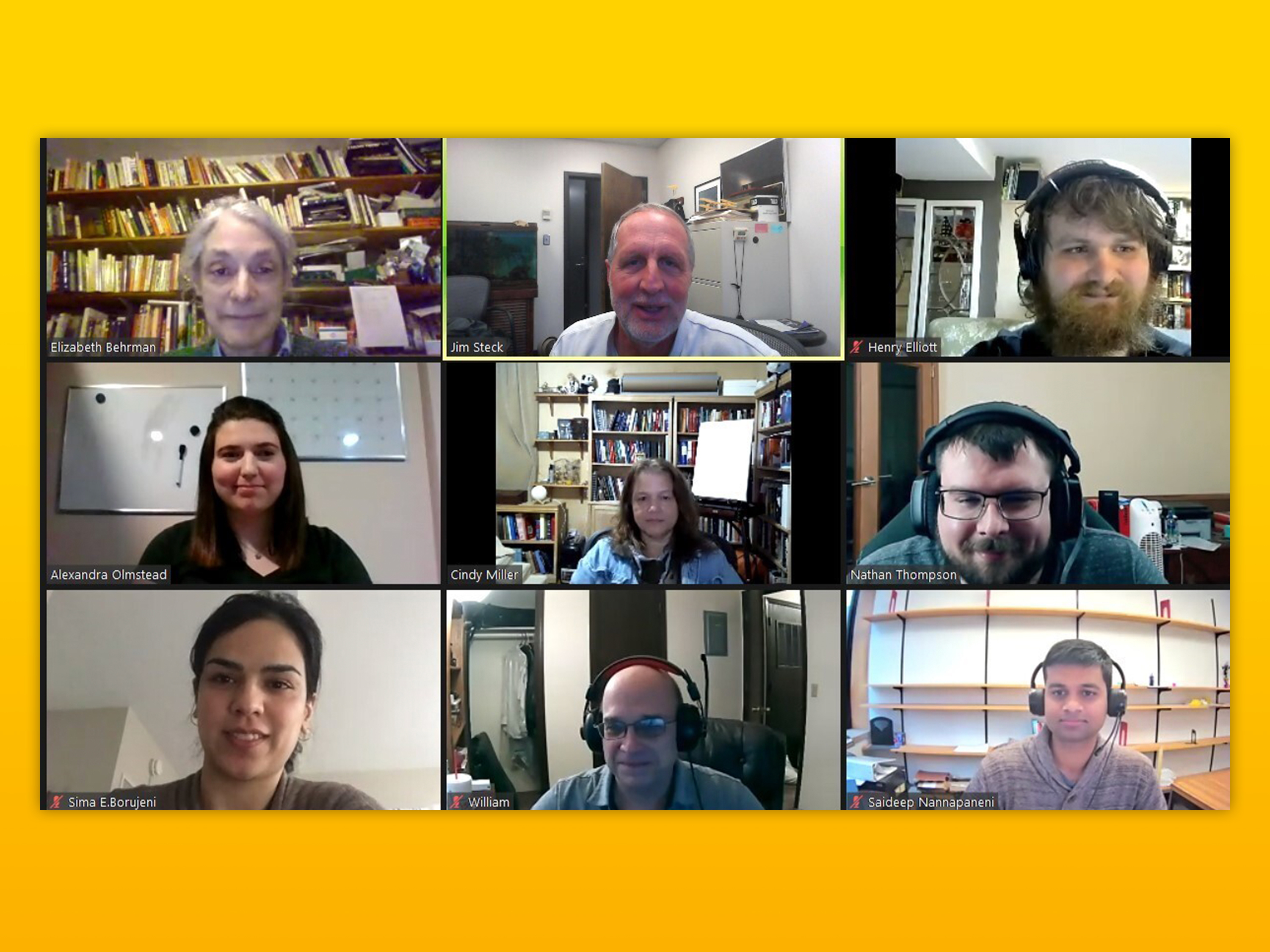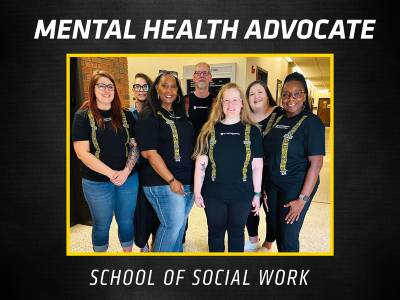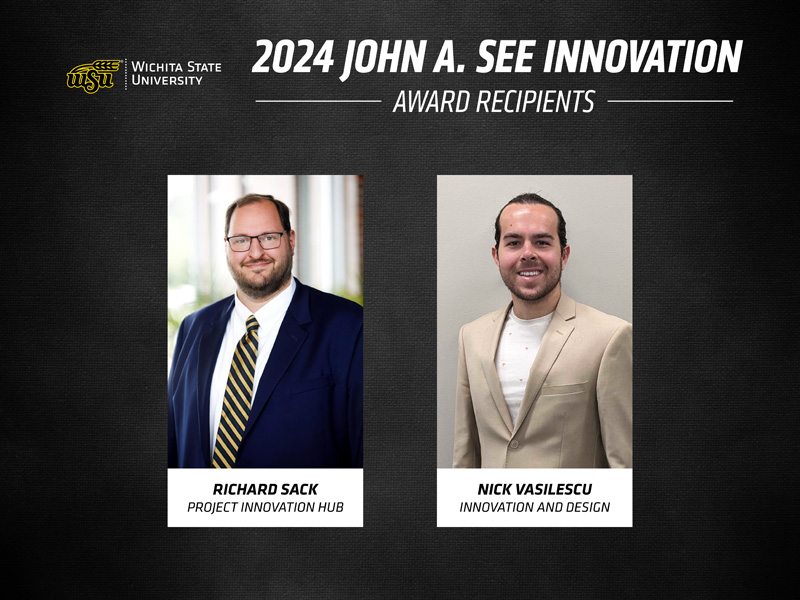For three decades, an interdisciplinary team at Wichita State has been exploring how machine learning – also known as artificial intelligence – can maximize the potential of quantum computing.
Quantum computing applies the understanding of quantum physics – the behavior of energy and matter at its most basic level – so that computations may be performed at unprecedented speed, solving problems of exceptional complexity that cannot be solved by conventional computers.
Led by Dr. Elizabeth Behrman, a professor of physics, and Dr. James Steck, professor of aerospace engineering, the group currently has seven faculty actively involved.
Behrman, a pioneer in the field of quantum computing, said the two first met in 1990 when they were both new faculty at Wichita State.
“Twenty-five years ago, I was doing a lot of research on artificial neural network, which are used in adaptive flight controls,” said Steck, whose area of expertise is flight control systems. Artificial neural networks are structured like the brain, made out of artificial neurons connected together by data pathways modeling synapses in the brain.
“The brain has 10 billion neurons. An ant has 100,000 neurons,” Steck said. “Even today it is hard to build an artificial neural network as big as an ant’s brain, so I was looking at quantum devices, which are very small as a way to build a really big artificial brain.”
Steck and Behrman began looking at the overlap of her research into quantum computing and his interest in artificial neural networks. “If you believe in reincarnation, I suppose you could say I must have been extra virtuous in my previous life I had the good fortune to find such an excellent collaborator as Jim Steck,” she said.
professor of physics
“Machine learning is used to train artificial neural networks, so we started applying machine learning to train quantum computers to do calculations at a time when everyone else was approaching quantum computers using the same logic gate methods used with traditional PC microprocessors,” Steck said.
Sometimes, you can be too far ahead of your time. While quantum computing and neural networks have recently become a popular topic of research, in the 1990s the two found it hard to get recognition for their work because it just didn’t “fit” traditional fields of research.
“We had incredible difficulty getting published at first,” Behrman said. “Neural network journals said, ‘What is this quantum stuff?’ and physics journals said, ‘What is this artificial neural network stuff?’”
“We were doing really cool groundbreaking work on using machine learning for quantum computing long before it was cool,” Steck said.
They begin presenting papers and publishing journal articles on topics related to neural networks and quantum computing in the early 1990s. Their landmark work came in 2008 when they published their break-through concepts for machine learning in quantum computers. That paper, “Quantum algorithm design using dynamic learning” in Quantum Information and Computation, has been cited by other researchers dozens of times since.
Generally though, their work is not widely known, Berhman said, but occasionally thanks to the internet, new collaborators seek out the pair. One of these is Dr. Cindy Miller, Joint Staff liaison to NATO Allied Command Transformation. Miller’s job is to seek out areas of promising technological advances from which the United States and our allies would benefit, she said.
"Dr. Behrman and Dr. Steck are advancing a type of research that has the potential to achieve earlier some of the anticipated advantages of quantum computing. Those advantages include military capabilities for the United States and our allies to ensure our soldiers, sailors, airmen, marines, and guardians have what they need to keep them safe and make them successful,” Miller said.
“Anticipated advantages include the ability to train faster and more precise artificial intelligence in operations; optimizing military logistics; and the development of new materials for weapon systems,” she said. “They have been kind enough to let me learn more about this important field through interaction with their research group."
In addition to Steck and Behrman, their research group now includes faculty from McPherson College and University of Kansas, in addition to five at Wichita State: Behrman, Steck, and Saideep Nannapaneni, Nathan Thompson and Bill Ingle.


 Courtesy
Courtesy


